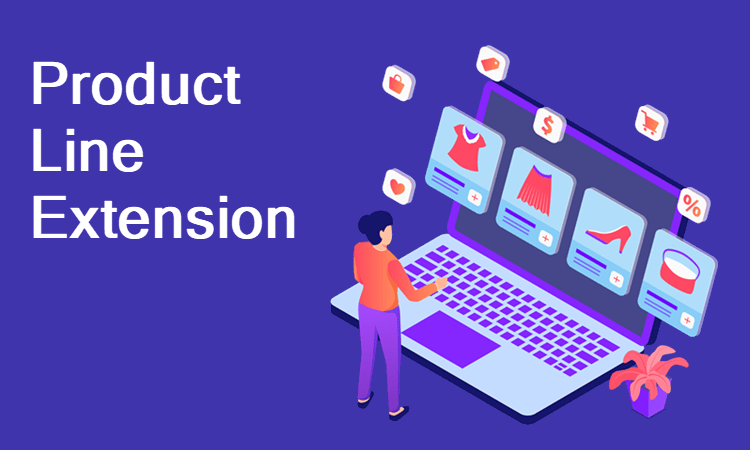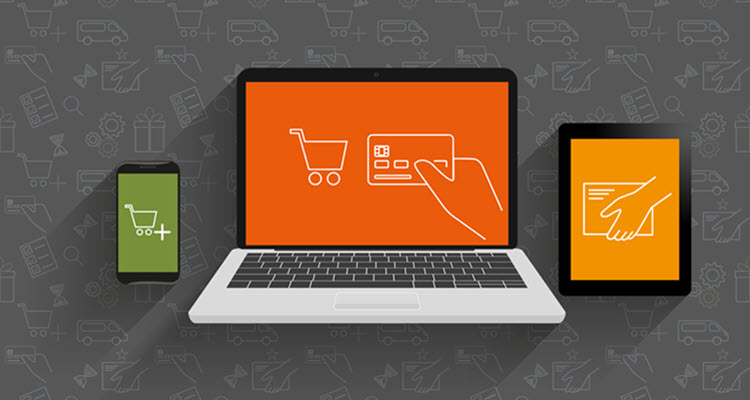


If you’re new in business or just building an ecommerce website, it can be challenging to identify the difference between a product line extension and a brand extension. A product line extension refers to adding new features to products in a particular category. On the other hand, brand extension is using an established brand name in new product categories.
Let’s take Nike as an example. Nike implements a mixture of brand and product line extensions to expand its market reach and increase sales.
Nike’s Air Force 1, Cortez, Metcon 5, and React Infinity Run are results of product line extensions. Nike’s Air Force 1 and Cortez are for style lovers, while Metcon 5 and React Infinity Run are for training and running, respectively. They are all Nike shoes, only with different features and characteristics. Each new design represents a product line extension.
On the other hand, Nike’s golf equipment and sunglasses are the results of brand extensions. They are no longer Nike’s core product, but entirely separate product categories. In other words, although brand extension involves adding a product, that product bears no resemblance to the original existing product. Deciding whether to extend a product line or a brand depends on your business goals.
If you want to reinvigorate a current line, a product line extension should be your next move. If you want to tap new markets, a brand extension is your best bet.
Now that you know what product line extension is, it’s time to learn how to go about it.
Extending a product line requires that you follow a process. Stay organized and plan the entire project. You might need tools such as scheduling software for your employees, market research tools, or a project management system. The process requires time, money, and an understanding of your target market if you want to achieve optimal results.
Here are the steps you need to follow:
Once you decide you need a product line extension, the next step is to determine the new items you will add to an existing product category.
To understand this, study your current customers and the reasons they buy from you. Avoid focusing on buyer personas or representations of your ideal customer. These are great for determining the type of messaging that resonates with your target audience but, if you’re planning to launch new products in a specific category, work with real people in your customer base.

That’s where Google Analytics can help you. Google Analytics provides you with relevant details about your audience, such as where they live, their age, and their interests based on their browsing behavior. All of these factors are important when determining the type of new product to launch.
Additionally, engage your existing customers directly via email or social media. Ask them what they like to purchase from your ecommerce store and why. Send a separate email to people who bought from your store once but never returned a second time. Ask them why they never made a repeat purchase. Were there issues with the product they bought? What issues? What exactly didn’t they like about the product?
Compare answers to find a gap you can fill with your product line extension.

At this point, discuss your study findings with the product team. Determine the gap you need to fill and assess the possible product variants you can create. Brainstorm and get as many realistic product ideas as possible.
For example, imagine you run an online fashion store and that many of those who bought from you once never returned to buy again. Suppose they also said that they never returned to your store because the jeans they bought were too uncomfortable and there were no other types of pants they could purchase.
Based on those findings, here’s a list of possible product variants:
All the ideas on your list should take into account the gathered data and customer feedback. Since you want to get those people back to your site and buying from you again, you have to address their pain points.
Once you have a list of feasible ideas, pick the best and move forward. But how do you determine the best? By looking at your data once again. Consider the previously-mentioned fashion store example.
Let’ say that based on Google Analytics, most of your customers are from the U.S., where it is currently summer. You might decide that adding wool and leather items isn’t the right move at the moment because those fabrics are too thick for the hot weather. Therefore, you might decide to add cotton pants to your product catalog next.
When creating product prototypes, make sure you address customer pain points. In this example, you’re trying to win back customers who want comfortable pants, so make your cotton pants as comfortable as possible.

Once you have your prototypes, run a test market. Don’t make the mistake of launching the product without seeing how your target market will respond. Test marketing combines scientific testing and controlled field experimentation. It helps minimize the risks that come with a new product roll-out.
Choose a small test market with the appropriate demographic characteristics. Identify the test market by analyzing acquired data.
Don’t just test for whether or not the prototypes address your target market’s pain points. Test for their response to other vital elements as well:
Observe the market response. You can also send surveys to members of your test market so you can get an accurate picture of how your prototypes are doing. That will allow you to make an informed decision about the fate of the product.
The results of your test marketing will determine what to do next. If the market response is positive, you can start preparing for a more significant roll-out of your product. If it drives costs down, outsource the labor to create the final product. But don’t compromise your brand quality.
If the market response is negative, you’ll need to make significant adjustments or perhaps even try another product and repeat the entire process.
Beware of letting bias take over during this process. Don’t be so enamored with an idea that you end up ignoring what the data tells you. That could mean significant losses for your company in the long run.
Be realistic and let your test market talk. Remember, you’re looking for a product variant that sells. The deciding factor are the buyers and what they think of your new product.
Extending a product line is a business strategy many ecommerce and retail businesses use to increase sales and expand their market share.
Extending a product line is not as simple as adding a product to a specific category. For optimal results, follow a strategic process that requires careful thought, planning, and research before the product’s official launch. Extending a product line entails costs. If sales don’t take off, you will incur significant losses.
We’ve outlined the steps you need to follow to minimize the risks associated with extending a product line. Put in the time and effort, try to be as objective as possible, and let the data speak to you. If you do all these things, your next product variant will be a huge success. And your future, like the future of ecommerce, will be bright!
A product line extension can bring numerous benefits to your business. However, you need a plan. Determine if a product line extension is a good idea and then strategize how to execute the plan.
In this article, we explain how to extend a business’s product line and explore the benefits brands can derive from it. With an in-depth understanding of this business strategy, you can implement a product line extension for your ecommerce store with ease and reap the rewards.

Extending a product line means expanding an existing product category by adding new items to it. A product line extension gives brands a competitive advantage because they can offer consumers a wider variety of choices within a specific product category. Product line extensions help maintain customer loyalty, as customers prefer to stay with brands they know and trust. This, in turn, increases revenue.
With a product line extension, brands also reduce the risk they’d incur in developing entirely new products. Your customers are already familiar with an existing item, and they like it. If a brand adds new features to an existing product, customers wouldn’t be shocked by the changes and are likely to accept that product variant.
If you’re new in business or just building an ecommerce website, it can be challenging to identify the difference between a product line extension and a brand extension. A product line extension refers to adding new features to products in a particular category. On the other hand, brand extension is using an established brand name in new product categories.
Let’s take Nike as an example. Nike implements a mixture of brand and product line extensions to expand its market reach and increase sales.
Nike’s Air Force 1, Cortez, Metcon 5, and React Infinity Run are results of product line extensions. Nike’s Air Force 1 and Cortez are for style lovers, while Metcon 5 and React Infinity Run are for training and running, respectively. They are all Nike shoes, only with different features and characteristics. Each new design represents a product line extension.
On the other hand, Nike’s golf equipment and sunglasses are the results of brand extensions. They are no longer Nike’s core product, but entirely separate product categories. In other words, although brand extension involves adding a product, that product bears no resemblance to the original existing product. Deciding whether to extend a product line or a brand depends on your business goals.
If you want to reinvigorate a current line, a product line extension should be your next move. If you want to tap new markets, a brand extension is your best bet.
Now that you know what product line extension is, it’s time to learn how to go about it.
Extending a product line requires that you follow a process. Stay organized and plan the entire project. You might need tools such as scheduling software for your employees, market research tools, or a project management system. The process requires time, money, and an understanding of your target market if you want to achieve optimal results.
Here are the steps you need to follow:
Once you decide you need a product line extension, the next step is to determine the new items you will add to an existing product category.
To understand this, study your current customers and the reasons they buy from you. Avoid focusing on buyer personas or representations of your ideal customer. These are great for determining the type of messaging that resonates with your target audience but, if you’re planning to launch new products in a specific category, work with real people in your customer base.

That’s where Google Analytics can help you. Google Analytics provides you with relevant details about your audience, such as where they live, their age, and their interests based on their browsing behavior. All of these factors are important when determining the type of new product to launch.
Additionally, engage your existing customers directly via email or social media. Ask them what they like to purchase from your ecommerce store and why. Send a separate email to people who bought from your store once but never returned a second time. Ask them why they never made a repeat purchase. Were there issues with the product they bought? What issues? What exactly didn’t they like about the product?
Compare answers to find a gap you can fill with your product line extension.

At this point, discuss your study findings with the product team. Determine the gap you need to fill and assess the possible product variants you can create. Brainstorm and get as many realistic product ideas as possible.
For example, imagine you run an online fashion store and that many of those who bought from you once never returned to buy again. Suppose they also said that they never returned to your store because the jeans they bought were too uncomfortable and there were no other types of pants they could purchase.
Based on those findings, here’s a list of possible product variants:
All the ideas on your list should take into account the gathered data and customer feedback. Since you want to get those people back to your site and buying from you again, you have to address their pain points.
Once you have a list of feasible ideas, pick the best and move forward. But how do you determine the best? By looking at your data once again. Consider the previously-mentioned fashion store example.
Let’ say that based on Google Analytics, most of your customers are from the U.S., where it is currently summer. You might decide that adding wool and leather items isn’t the right move at the moment because those fabrics are too thick for the hot weather. Therefore, you might decide to add cotton pants to your product catalog next.
When creating product prototypes, make sure you address customer pain points. In this example, you’re trying to win back customers who want comfortable pants, so make your cotton pants as comfortable as possible.

Once you have your prototypes, run a test market. Don’t make the mistake of launching the product without seeing how your target market will respond. Test marketing combines scientific testing and controlled field experimentation. It helps minimize the risks that come with a new product roll-out.
Choose a small test market with the appropriate demographic characteristics. Identify the test market by analyzing acquired data.
Don’t just test for whether or not the prototypes address your target market’s pain points. Test for their response to other vital elements as well:
Observe the market response. You can also send surveys to members of your test market so you can get an accurate picture of how your prototypes are doing. That will allow you to make an informed decision about the fate of the product.
The results of your test marketing will determine what to do next. If the market response is positive, you can start preparing for a more significant roll-out of your product. If it drives costs down, outsource the labor to create the final product. But don’t compromise your brand quality.
If the market response is negative, you’ll need to make significant adjustments or perhaps even try another product and repeat the entire process.
Beware of letting bias take over during this process. Don’t be so enamored with an idea that you end up ignoring what the data tells you. That could mean significant losses for your company in the long run.
Be realistic and let your test market talk. Remember, you’re looking for a product variant that sells. The deciding factor are the buyers and what they think of your new product.
Extending a product line is a business strategy many ecommerce and retail businesses use to increase sales and expand their market share.
Extending a product line is not as simple as adding a product to a specific category. For optimal results, follow a strategic process that requires careful thought, planning, and research before the product’s official launch. Extending a product line entails costs. If sales don’t take off, you will incur significant losses.
We’ve outlined the steps you need to follow to minimize the risks associated with extending a product line. Put in the time and effort, try to be as objective as possible, and let the data speak to you. If you do all these things, your next product variant will be a huge success. And your future, like the future of ecommerce, will be bright!